

As I told you in my last post in the
#pinmmaple community, last week I was in Tenerife island teaching a training course at the University of La Laguna from Tuesday to Thursday morning and afternoon. Therefore, in this post I will concentrate the places of interest that I visited the day of my arrival to the island and the places that I could visit in the city of Santa Cruz de Tenerife after doing my work at the university.

On my arrival to the island of Tenerife, after checking that I had no urgent administrative work on my laptop, after picking up my rental car, I drove to the Teide Volcano. For this I followed a route of about an hour that goes from Tenerife North Airport to the viewpoint of the roulette. During this route I stopped at several viewpoints to take some nice pictures of the spectacular views from the heights of the cities of Santa Cruz de Tenerife and Puerto de la Cruz and also to take wonderful pictures of the imposing volcano Teide.



The final point of this journey to contemplate the Teide, as I said, was the viewpoint of the roulette. I chose this viewpoint because in it apart from having a beautiful view of the Teide peak and in turn you can photograph the Teide next to a large rocky massif that those of us who knew the old 1000 pesetas bill makes us go back to life before the euro.
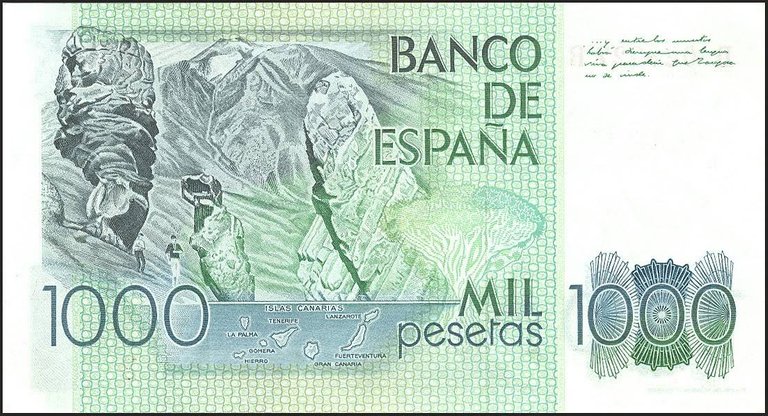
Source


All those who want to see a little more about the route of viewpoints, I published it recently and I share here a link.
Teide post
After the obligatory visit to the Teide, I descended again towards Santa Cruz de Tenerife, but with the intention of making a different way I descended the southern slope of the island to the town of San Isidro, it was not a good choice because I found a road with a greater number of curves but without traffic. However, some of them were very dangerous curves, so I recommend driving with great caution on these high mountain roads.
Once I arrived in San Isidro, I took the highway towards Santa Cruz de Tenerife, but as there were still a few minutes of light, I decided to make a previous stop in the town of Candelaria.
Candelaria is a small town 20 kilometers from Santa Cruz de Tenerife. It is a very touristy town, as it is home to a few interesting points of interest.
One of the main points of interest of Candelaria is its basilica in honor of the Virgin of Candelaria, which is the patron saint of the Canary Islands, whose image was found by two aboriginal shepherds (Guanches) in the 14th century. This basilica was built in the place where the Guanches venerated the Virgin after the conquest of the island by Spain (Cueva de Achbinico). This cave still exists today behind the Basilica.


At the time I arrived at the basilica a mass was being celebrated, so I could only take a picture of the spectacular interior of the temple from the main door. Because the night would soon arrive and I wanted to photograph the rest of the places of interest I opted not to attend the mass.

After leaving the basilica, I went to the side of the square of the basilica, because there are nine statues representing the nine "mencey" of the island of Tenerife at the time of the conquest of the island by the Spaniards.

At the time of the conquest of Tenerife by the Spaniards, the island was divided into nine districts called in territories called menceyatos and in each of them there was a maximum civil, military and religious authority called mencey. Therefore, one could say that the translation would be that a mencey was a ruler/king of each of the territories.
In honor of these aboriginal rulers, each of the nine menceys are represented on a large volcanic rock pedestal equipped with their staffs and spears.
Below is a photograph of each Guanche ruler indicating the name and the territory that each one ruled, according to information consulted on a web page of the city council of Candelaria.
Mencey information
Acaymo: Tacoronte Mencey

Adjona: Abona Mencey

Anaterve: Güimar Mencey

Bencomo: Taoro Mencey

Beneharo: Anaga Mencey

Pelicar: Icod Mencey
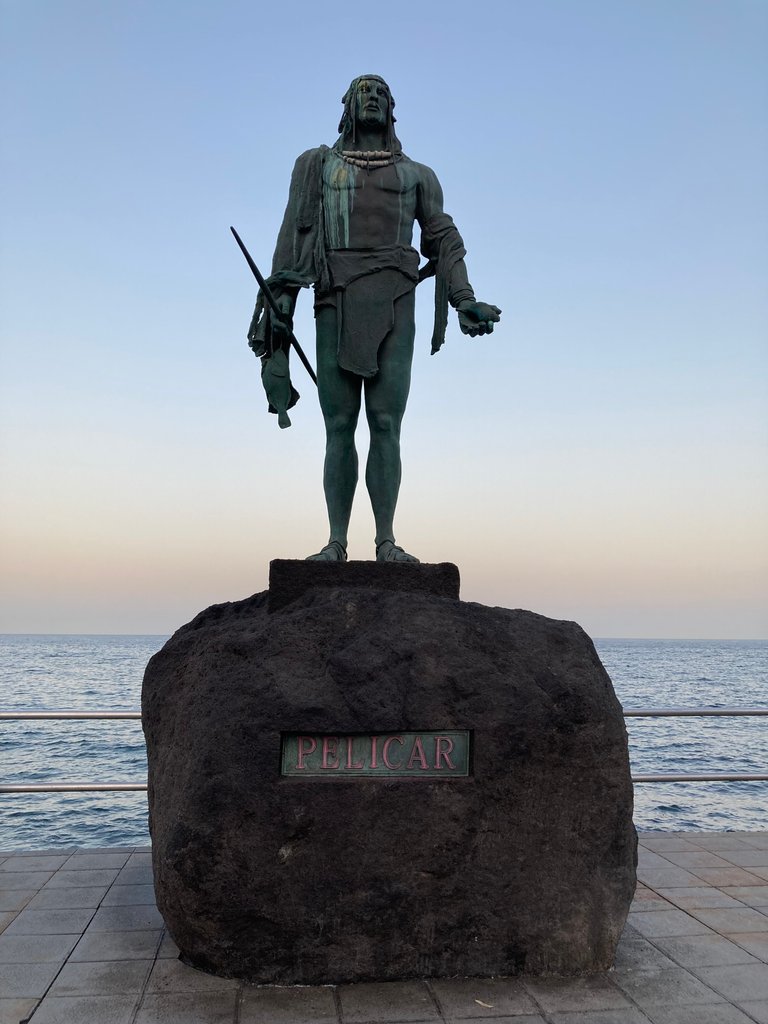
Pelinor: Adeje Mencey

Romen: Daute Mencey

Tegueste II: Tegueste Mencey

Other attractions of the town of Candelaria are its commercial promenade full of shops where you can buy souvenirs of the island or have some delicious beers in its terraces and also its black sand beach of volcanic origin.


After this visit in the town of Candelaria, I resumed my route to Santa Cruz de Tenerife, which is where I had made my hotel reservation and where I made the rest of the tourist visits after leaving work from the training course at the University of La Laguna.

After leaving work on the first day of the course, after stopping by the hotel and sending a few urgent emails, I was given 19:00h. At that hour, at this time of the year, it is already night in Santa Cruz de Tenerife, but as it was a pleasant temperature, I decided to take a night walk around the city.
The first stop on my walk was the García Sanabria park, one of the most important parks in Santa Cruz de Tenerife where one can enjoy a great diversity of trees and tropical vegetation such as palms, ficus, palms, cactus, etc.


After a short walk through the park, I took the road to the Plaza de España, but during the tour I stopped in other parks and gardens where I found curious sculptures. For example, I came across this sculpture of a chicharro that refers to the affectionate name of chicharreros that the inhabitants of Tenerife receive by the inhabitants of the rest of the islands that make up the Canary Islands.

After taking some pictures of the chicharro statue, that same street full of colorful and beautiful outdoor restaurants led me to the Plaza de España.

In this square there is a large water pond that delights photography lovers like me, as one can capture some nice pictures with reflections on the water of the buildings surrounding the pond, such as the great cross that is the monument to the fallen of the civil war or the government building of the government of the canary islands.


After taking a few pictures in the pond, I approached the monument to the fallen, but before reaching it, a steel statue in the shape of a tree and a human called my attention.


Next to this sculpture, I saw that there was an entrance to the ruins of an ancient castle that defended the island at the time when the English tried to conquer the island from the Spanish. As the opening hours were only until 18:00 h, I planned that the next day I would leave directly from the university to this square to visit the ruins of this ancient defensive castle and at the same time take daytime photographs of the monument of the fallen. Therefore, after being in this square, I went back to the hotel to have dinner and rest.

As I had planned the day before, I was able to leave work at the university a little earlier and thus I could reach the Plaza de España when it was still dark and the first thing that caught my attention were the beautiful reflections that could be captured in the pond in the opposite direction to those taken the previous day at night. As you can see in the following photographs, splendid reflections were obtained from the mountains that are dozens of kilometers away from the pond and also from the trees, buildings, lampposts and all the elements that surrounded the pond at that moment.
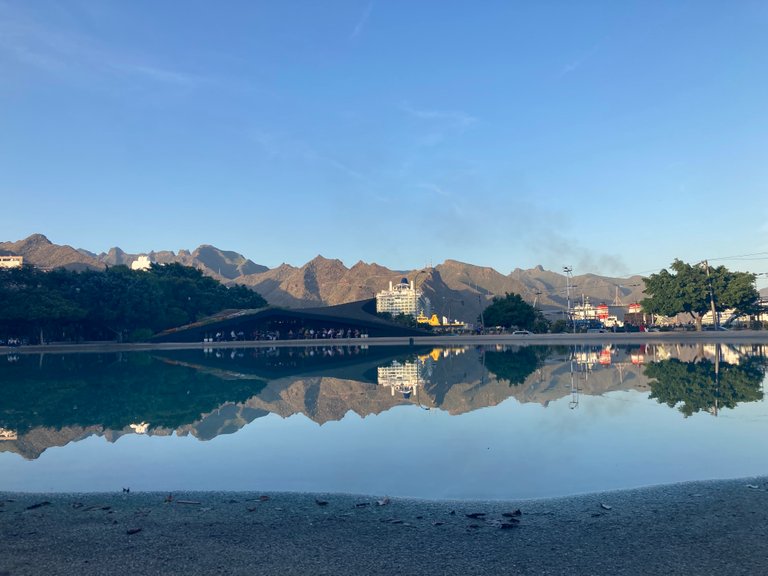



However, due to the fact that the access to the subway castle of San Cristobal which is located just below the pond closed at 18:00 h, the next thing I did after taking pictures in the pond was to access this subway castle which in turn has free admission.

Once I descended some stairs that give access, I found a reception where a receptionist explained to me what the visit consisted of.
First, she told me to go along a long corridor reading some monographs where the battles that took place on the island in the seventeenth and eighteenth centuries between the British crown and the Spanish crown, which was the one that ruled the island, were told.
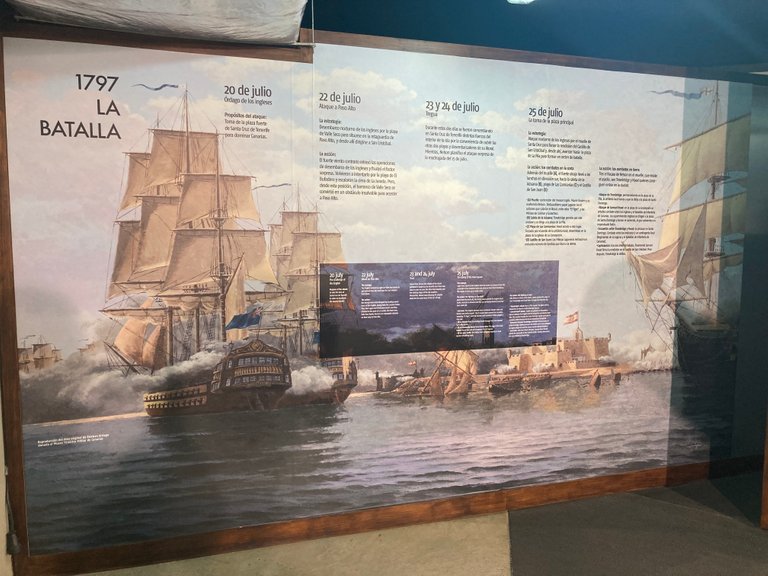

Then, I went to a side of the corridor where the history of the battles between the British and the Spanish and the construction of the castle as a defensive tool of the city was projected on a wall near the castle, along with another castle located a few kilometers near the current auditorium of Santa Cruz de Tenerife.

After this projection I was looking at the remains of the old castle, although the quality of light is a little low and, therefore, I did not get good quality photographs.


Finally, the visit concluded by seeing an old cannon called "The Tiger". According to the information in the cannon room, it was responsible for defeating the British in the battles and for causing the loss of an arm to Commander Nelson.
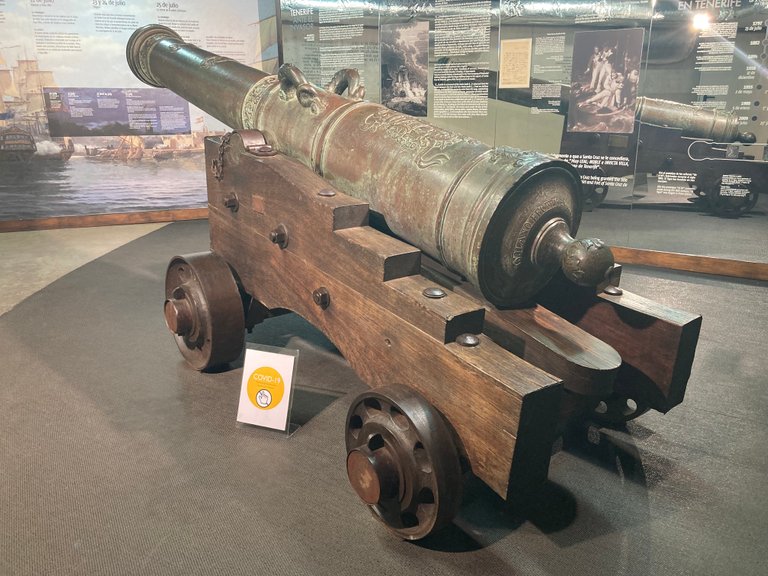

Once I left the visit to the remains of the Castillo de San Cristobal, I approached the large cross next to the pond that is called monument to the fallen. This monument is one of the many monuments still existing in Spain from the Franco dictatorship. In its upper part there is a viewpoint and in the lower part there is a crypt that is currently empty.

Apart from the cross itself, the monument has 3 main elements:
The first of them is the representation of the homeland carrying a fallen of the civil war.

The second element is the representation of the victory at the bottom of the cross.

The third of the elements are the protectors of the cross that resemble Templars, existing one on each side of the cross.

After a few minutes in the square and a drink in one of the nearby terraces I went back to the car and drove to my hotel.

Because my last day on the island I left work late, I took a last walk to the area where the auditorium of Tenerife and the defensive castle of San Juan are located. However, before reaching these two points of interest that I already knew from previous visits, I stopped at the market of Our Lady of Africa.

This market is the largest market in Santa Cruz de Tenerife, but it operates mainly in the mornings, so I could only take some pictures of the exterior and also of a beautiful sculpture representing the hard work of fishermen that abound on the island.


Afterwards, I walked for 2 kilometers and finally arrived in the vicinity of this spectacular auditorium in the shape of a boat by the Spanish sculptor Santiago Calatrava. At the same time I leave you some pictures that I have of another visit made more than 8 years ago that I took during the day so that you can see better the exterior beauty of this auditorium.


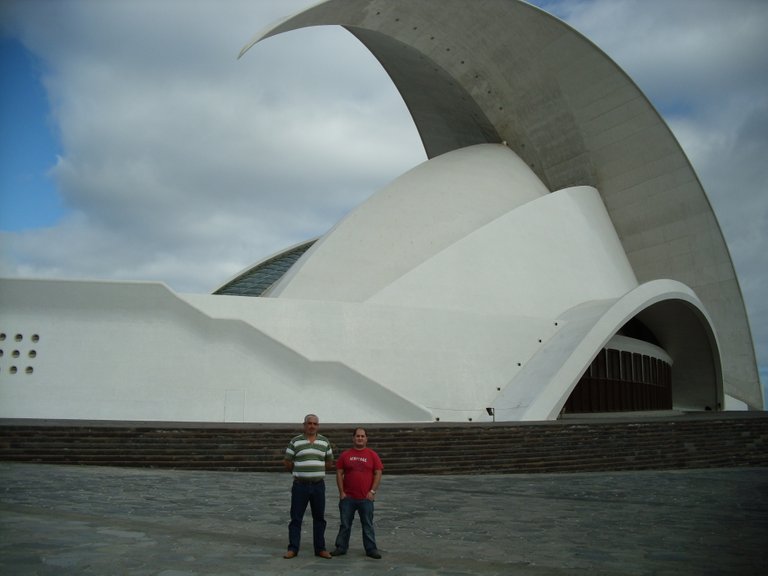
In turn, on the right side of the auditorium, is located the second defensive castle of the city, which is the Castle of San Juan. This, unlike the previous castle, is very well preserved. As in the case of the auditorium, I share with you a photograph of the castle taken during the day more than 8 years ago.


After the long walk, return to the hotel for dinner and rest.
I hope you like this peculiar visit to the island of Tenerife where I have not presented the beaches, zoos and water parks that are in other areas of the island and are also fun places to visit.
Best regards.
Own photograph taken with my iPhone SE.
Cover, separators and banner created with www.canva.com (free version).
Translated with www.DeepL.com/Translator (free version).






































































